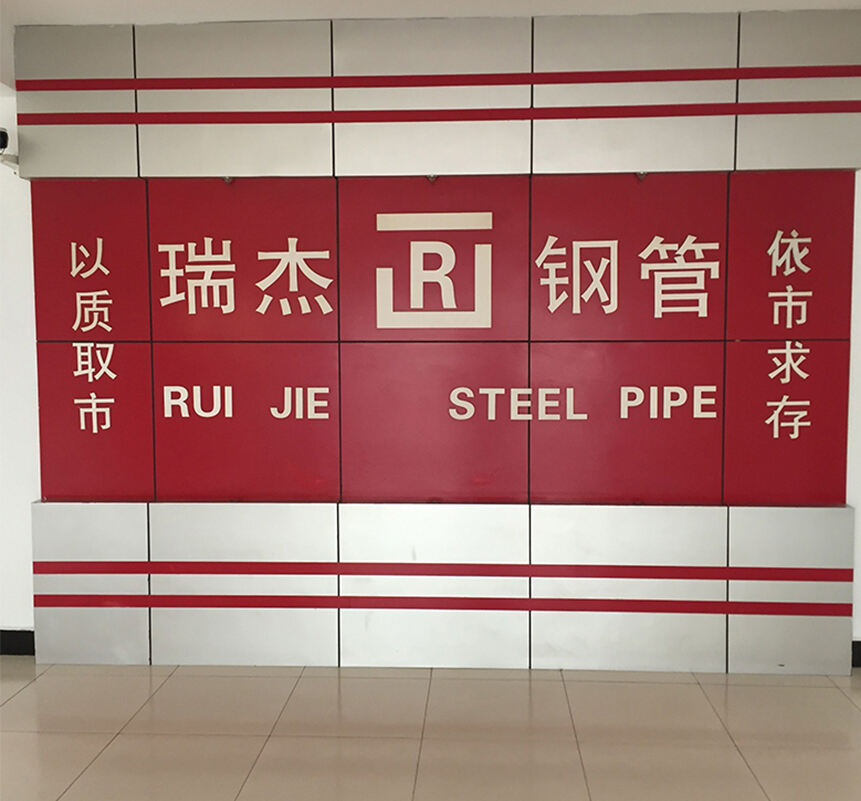3PE externa anti-corrosio ductus est late uti technologia anti-corrosiva, praecipue ad usum pro externa superficie anti-corrosiva olei et gas ductus et urbana aquarum suppeditatio ductus. 3PE significat tres-stratum polyethylene, quod est compositum stratum systema constans ex tribus stratis:
3PE externa anti-corrosio ductus est late uti technologia anti-corrosiva, praecipue ad usum pro externa superficie anti-corrosiva olei et gas ductus et urbana aquarum suppeditatio ductus. 3PE significat tres-stratum polyethylene, quod est compositum stratum systema constans ex tribus stratis:
FBE prima stratum (fusus epoxy pulvis): Quomodo prima stratum, FBE stratum praebet bonam conglutinationem ad ferrata tubus matrix et habet excellens chemica proprietas anti-corrosiva.
Stratum adhaesivum: Stratum medium agit ut adhaesivum, ut certam cohaesionem inter stratum FBE et stratum externum ex polyethyleno praestet, dum certam vim mechanicam praebet.
Stratum protectivum externum ex polyethyleno: Stratum exterius est ex polyethyleno alto densitate (HDPE), quod praestat protectionem mechanicam, impermeabilitatem ad aquam et resistenciam adversus erosionem environmentalis.
Caracteres strati anti-corrosivi 3PE comprehendunt:
Bonae proprietates mechanicae et electricae insulae.
Impermeabilitas aquae parva meliorem impermeabilitatem aquae tuborum praebet.
Habemus bonam resistenciam contra cathodicam exfoliationem et idoneum est pro technologia protectionis cathodicae.
Resistens ad perforationem radicum plantarum et erosiones microbiarum, conveniens variis ambientibus soli.
Habet fortia adhaesio ad tubos ferreos et bonam resistenciam impactionis, praebens protectionem mechanicam additivam.
Processus productivus tuborum ferreorum anti-corrosivorum 3PE continet abrasionem sabulo et eliminatio ferruginis in superficie externa tubi ferrei, praeparatio calefactionis, pulveris epoxy spargendum, colatura adhesivi, extrusio et involucrum strati polyethyleni, etc.
Causae defectus strati anti-corrosivi 3PE possunt includere:
Inadequata praeparatio superficiei resultat in infirmo conglutinatione inter stratam anti-corrosionis et matricem tubi ferri.
Mala qualitas constructionis, sicut insufficientis altitudo schematis anchor, influet in robur conglutinationis strati anti-corrosionis.
Experimenta protectionis cathodicae ostendunt quod anormale potentia absque potential causa stratam anti-corrosionis exfoliare posset.
Modicus gradus technicus operariorum in loco affectat qualitatem constructionis.
Studium mecanismi exfoliationis stratum 3PE anti-corrosionis indicat quod residua stress thermalis, exfoliatio cathodi, penetratio particulae corrosivae et defectus ipsius tubi anti-corrosionis sunt principes factores causantes exfoliationem.
Ut pelliculae exfoliationis resistentiam stratum anti-corrosivum 3PE meliorem faciat, necesse est optimizare processum stratificandi et qualitatis controllem. Simul, causas defectuum strati anti-corrosivi investigare oportet ut theoriam fundamentalem praebere possint ad efficaces protectionis actiones adoptandas.
tubuli ferrei cum strato anti-corrosivo 3PE latam applicationem prospectum habent. Cum crescat structura ductuum olei et gasis, industria anti-corrosiva aureum tempus evolutionis suscipiet. Praeterea, technologia anti-corrosiva 3PE etiam apta est pro aquarum urbium ductibus, quae iuvat meliorem aquae qualitatem promovere et vitam ductuum prolongare.
In structurandi et conservandi processu, cavendum est ne stratum anti-corrosivum 3PE laedatur, et opportune technica reparandi adhibeantur ut integritas et efficacia totius strati anti-corrosivi servetur.
In generale, propter excellentes proprietates anti-corrosivas et longam vitam servilem, 3PE externae anti-corrosivae ductus diffusius sunt in usu in constructione ductuum sepultorum tam domi quam foris.
| Crassitudo stratum anti-corrosivum | ||||
| Nominalis tubi diametros DN | Epoxy polvere coating (μm) | Adhesivum stratum (μm) | Minima crassitudo tegumenti (mm) | |
| (G) Generalis | (S) Intensior | |||
| DN≤100 | ≥80 | 170~250 | 1.8 | 2.5 |
| 100<DN≤250 | 2 | 2.7 | ||
| 250<DN<500 | 2.2 | 2.9 | ||
| 500≤DN<800 | 2.5 | 3.2 | ||
| DN≥800 | 3 | 3.7 | ||
| Indiciae operationis strati polyethyleni | ||||
| Numerus | Res | Indiciae performance | Test Methodi | |
| 1 | Robur Tensile | (MPa) Axialis | ≥20 | GB/T1040 |
| (MPa) directio circumferentialis | ≥20 | GB/T1040 | ||
| deviatio (%) 1) | ≤15 | |||
| 2 | Elongatio ad rupturam (%) | ≥600 | GB/T1040 | |
| 3 | Resistentia ad fissuram ex stress environmentalis (F50) (h) | ≥1000 | GB/T1842 | |
| 4 | Durotas indentatio (mm) | 23℃±2℃ | ≤0.2 | F adfixum huic normae |
| 50℃±2℃ vel 70℃±2℃ 2) | ≤0.3 | |||
| Indiciae operationis strati anti-corrosivi | |||||
| Numerus | Res | Indiciae performance | Test Methodi | ||
| Secundus stratum | Tertius stratum | ||||
| 1 | Vis recidendi (N/cm) | 20℃±5℃ | ≥70 | ≥100 | G adhaesum ad hanc normam |
| 50℃±5℃ | ≥35 | ≥70 | |||
| 2 | Exfoliatio cathodica (65℃, 48h) (㎜) | ≤8 | B adhaesum ad hanc normam | ||
| 3 | Fortitudo impactus (J/㎜) | ≥8 | H adhaerens huic normae | ||
| 4 | Resistens flectendo (2.50) | Polyethylenum sine fissuris | J adhaerens huic normae | ||

Nostra amica turma te audire amat!